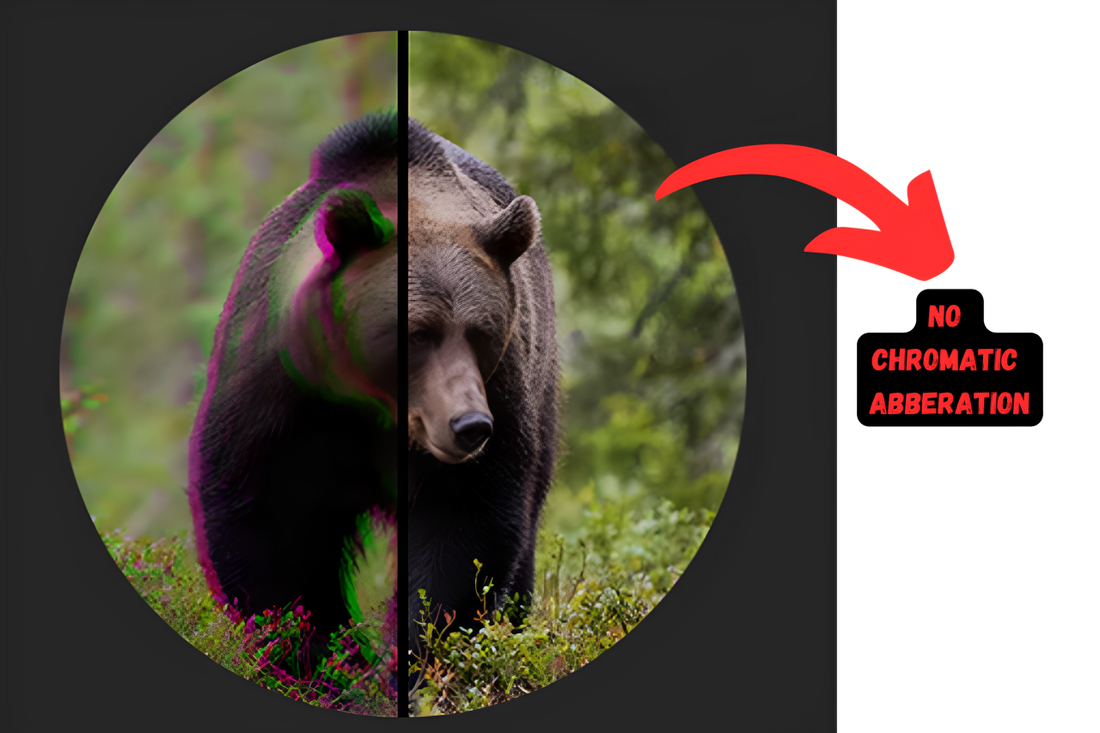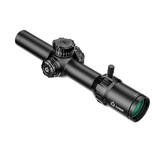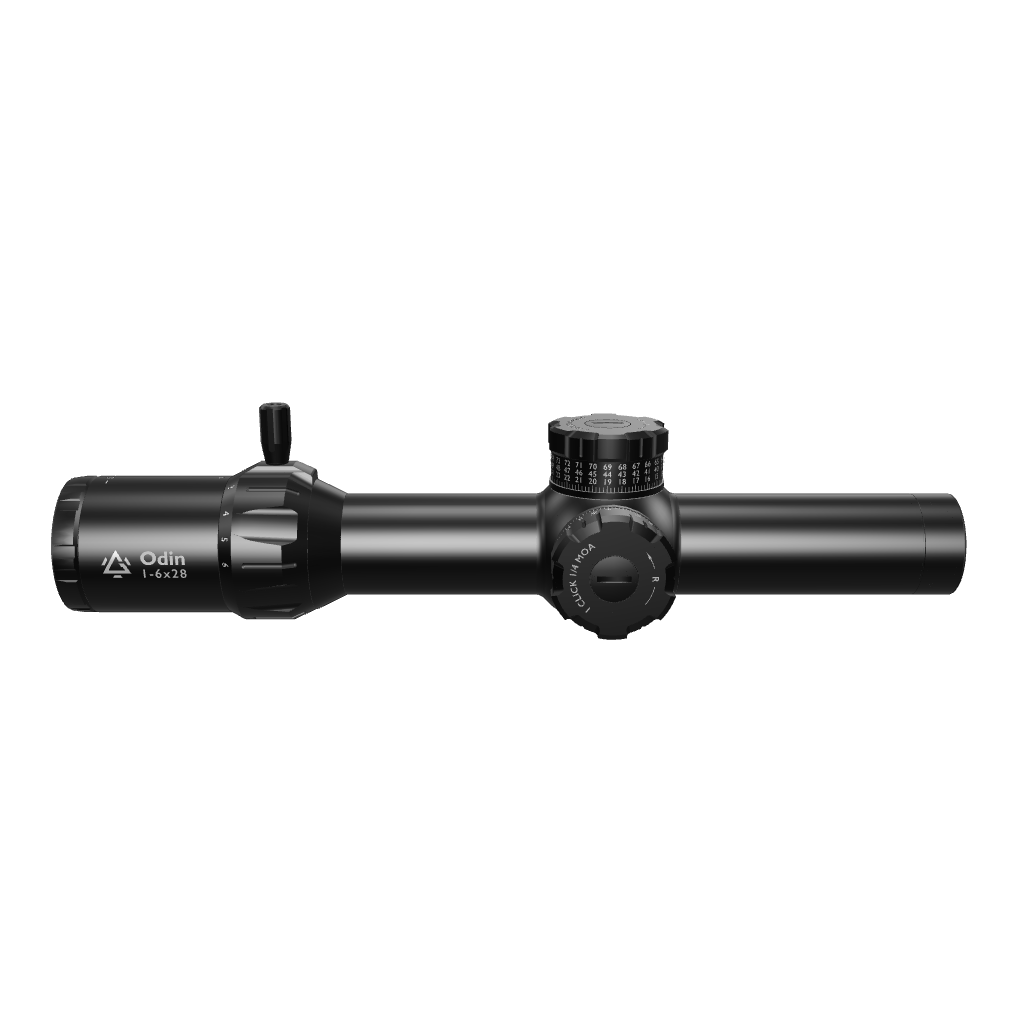The Importance of Optical Clarity and Good Quality Lenses In Optics
Optical clarity is one of the major factors that determines the quality of a rifle optic. There is no point splashing out on a $3,000 optic if you have to still struggle to see a target clearly, especially at a distance or in dim light.
Admittedly, that is not likely to happen with a $3,000 optic, but good optical quality is not limited to high-end scopes. For the average rifle scope, optical clarity depends largely on the quality of the glass used for the lenses. If you can get a good lens, you have a better chance of getting higher optical clarity, even for a medium-range scope.
Let’s break down what makes for good optical clarity, why it matters, and what you should look for, especially when it comes to premium options like ED glass and German Schott glass.
How Optical Clarity Affects Your Sight Picture
Optical clarity matters in shooting because it plays a crucial role in determining the quality and clarity of your sight picture, which in turn affects your shooting accuracy and overall performance.
Sight picture is the image you see when you look through your scope and line up your target with the reticle (crosshairs). You get a good sight picture when the entire image (especially the target and reticle) is in sharp focus, with no blur, distortion, or dark edges.
A clear and pristine sight picture is the first step to accurate shooting.
There are several factors that can affect the quality and clarity of your sight picture, and most of them can be fixed by adjusting your shooting position or adjusting your scope settings.
However, if your scope lenses are low quality, there is hardly anything you can do (at least not in the moment).
- The target becomes blurry, and the reticle is hard to read.
- It causes eye fatigue or strain, especially during long sessions
- Poor quality lenses slow down your target acquisition
- In low-light shooting, you may end up missing great shooting opportunities
In contrast, high-quality glass gives you a crisp, detailed view, helping you shoot with confidence and precision, whether you’re hunting, benchrest shooting, or doing tactical work.
| What Affects Sight Picture | Fix / How to Improve It |
| Eye Relief Too Short or Too Long | Adjust your head position or reposition the scope for proper eye relief. |
| Parallax Error | Use the scope’s parallax adjustment knob (if available) to match target distance. |
| Improper Scope Mounting / Misalignment | Mount the scope correctly—level and with proper torque using a scope leveling tool. |
| Reticle Out of Focus | Use the diopter adjustment on the eyepiece to bring the reticle into sharp focus. |
| High Magnification at Short Range | Use lower magnification when appropriate to maintain a wide, stable sight picture. |
| Inconsistent Cheek Weld / Head Position | Practice consistent shooting form; consider using a cheek rest for repeatable alignment. |
| Environmental Distortions (Mirage, Fog, etc.) | Use lens covers, anti-fog solutions, and wait for better conditions if needed. |
Scope Lenses
This is why the quality of lenses should be a crucial consideration when buying a scope. A scope with poor quality lenses presents an image that is dirty, hazy, or distorted, and inevitably leads to a drop in your shooting performance, no matter how good your rifle or shooting skills are.
With a good quality lens, on the other hand, you get the following:
- Sharper image as the lens helps you identify fine details on your target, even at longer ranges
- Better light transmission and a brighter image, especially at dawn or dusk
- Faster aiming: Clear images make it easier to lock on quickly
- Reduced eye strain: You can shoot longer without getting tired or frustrated
All of this makes clarity a top priority when choosing a scope. And that brings us to one of the best types of glass for the job: ED glass.
What Is ED Glass, and How Good Is It?
The “ED” in “ED glass” stands for Extra-low Dispersion, and it means the glass is specially formulated to reduce a phenomenon called chromatic aberration. Chromatic aberration is that color fringing or rainbow blur you sometimes see around high-contrast edges, like a deer’s outline against a bright sky.
With ED glass, you get:
- Sharper edge definition
- Truer colors
- Less image distortion at high magnification
It’s especially helpful in scopes used for:
- Long-range shooting
- Precision target shooting
- Low-light hunting
ED glass gives you brighter, cleaner, more accurate visuals, making it much easier to spot your target and line up a perfect shot.
Should You Specifically Look for ED Glass?
If clarity is important to you, and it should be, then yes, ED glass is worth looking for. If you regularly shoot beyond 100 yards, use scopes with higher magnification (6x or more), or shoot in variable lighting conditions, you might want to especially consider ED glass.
How Good Is Schott ED Glass?
When it comes to premium optics, Schott ED glass is among the best in the world. Schott is a world-class glass manufacturer, and their ED glass is used by top-tier European optics brands like Zeiss, Leica, and Swarovski.
Here are three reasons why German Schott ED glass stands out:
- Ultra-low impurities: The glass is incredibly pure, which translates to better light transmission and less distortion.
- Excellent chromatic aberration control: Images appear crisp and color-true, even at high magnification.
- Durability and consistency: Schott glass is manufactured under tight tolerances, making it highly reliable for rugged use.
If a scope advertises Schott ED glass, it’s almost always a sign of exceptional optical performance. It’s especially worth considering if you're investing in a high-end scope for professional or enthusiast-level shooting.
Gunnr Odin LPVOs: German ED Glass and More!
ED glass isn’t the only thing to consider. ED glass is a strong indicator of quality, but it’s best seen as part of a total optics package.
From the Odin 1-6×28 FFP LPVO to the Odin 1-10×28 LPVO FFP Rifle Scope, you get clean and clear German ED optical lenses, a steady and reliable FFP reticle, solid 7075 aluminum build, a convenient and effective zero stop function, tactile locking turrets, and a multitude of premium features at a decent and affordable price.
- Go for the ODIN 1- 6x 28 LPVO if you want fast and light, and mostly shoot inside 300 yards.
- The ODIN 1-8x 24 LPVO is ideal for better mid-range control without losing 1x speed.
- Go 1- 10x if you demand maximum performance from CQB to long-range precision.
Explore the best uses for an LPVO optic, and refer to this scope magnification chart to understand your magnification range.







